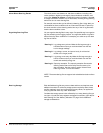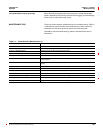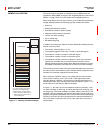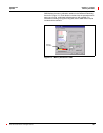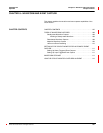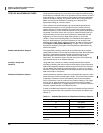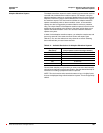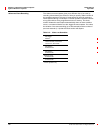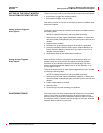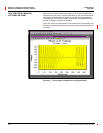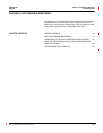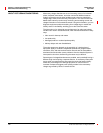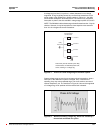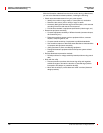
63230-300-212 Chapter 8—Waveform and Event Capture
April 2001 Types of Waveform Captures
109
© 2001 Schneider Electric All Rights Reserved
The adaptive waveform capture is used to record longer events than can’tbe
recorded with the disturbance waveform capture. For example, using the
adaptive waveform capture you could get a detailed view of an entire recloser
sequence. Each time a sag or swell is detected, the circuit monitor triggers
the waveform capture. The circuit monitor initiates an adaptive waveform
capture automatically when an alarm condition occurs, or the waveform
capture can also be triggered by an external device such as a protective
relay. The unique feature of the adaptive waveform capture is that it can be
enabled to stop recording at the dropout of the alarm, which allows you to
capture data while the alarm is true. You can also initiate this waveform
capture at any time.
In
SMS, for the adaptive waveform capture, you select the sample rate, and
how many seconds of the event the circuit monitor will capture (see
Table 8–2). You can also select how many channels to record. Selecting
fewer channels lets you record more seconds.
Choose fewer samples per cycle when you want to see more total seconds;
choose fewer channels to see a longer duration. See the
SMS online help for
instructions on setting up adaptive waveform captures.
NOTE: The circuit monitor also records the status of up to 16 digital inputs
that can be displayed along with the waveform capture. This is configured by
default.
Table 8–2: Available Resolutions for Adaptive Waveform Captures
Samples per Cycle
(Resolution)
Max. Duration
(with per-phase current and voltage channels)
16 110 seconds
32 55 seconds
64 27 seconds
128 13 seconds
256 6 seconds
512 3 seconds
Adaptive Waveform Capture



